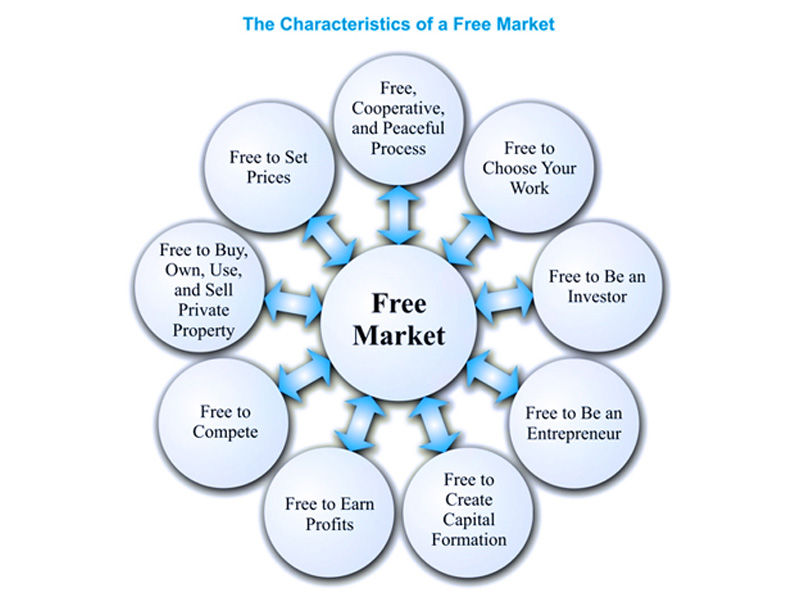An economic system is a way for communities or governments to organize and distribute resources, services, and goods all over a geographical region or country. The factors of ideal production, such as land, capital, labor, and physical resources, are regulated by these economic systems. An economic system comprises a variety of organizations, agencies, companies, decision-making processes, and consumption patterns that make up a community’s economic structure.
The economic system is a type of Social system. Mode of production is a related concept. The four fundamental economic challenges must be addressed and solved by all economic systems:
What sorts of commodities will be produced and in what quantities?
- How will items be produced?
- How will the output be distributed?
- When should you produce?
Economic systems encompass the study of how these many agencies and organizations are connected to one another, how information travels between them, and the social ties that exist inside the system (including property rights and structure of management). The conventional focus of economic system analysis has been on the contrasts and parallels between market and planned economies.
Types of Economic Systems
Around the world, there are many sorts of economies. Although they all share some basic characteristics, each has its distinct attributes. Each economy is built on its own set of circumstances and assumptions. Traditional economies, command economies, mixed economies, and market economies are the four primary types of economic systems.
1. Traditional Economic System

The traditional economic system is founded on the exchange of goods, services, and labor, all of which follow well-established patterns. It is heavily reliant on individuals, with little division of labor or specialization. The traditional economy is the most fundamental and oldest of the four types. Traditional economic systems still exist in several places in the world. It’s most widespread in rural areas of second and third-world countries, where farming and other traditional income-generating industries are the mainstays of the economy. In communities with conventional economic systems, there are frequently few resources to distribute. Either a few resources.
2. Command Economic System

In a command system, there is a powerful centralized authority–usually the government–in charge of a large section of the economy. The command economic system, often known as a planned system, is widespread in communist regimes since production decisions are made by the government. If a country’s economy has a lot of resources, it’ll likely lean toward a command economy. In this situation, the government steps in and takes control of the resources. Centralized control is ideal for valuable resources like gold or oil. Other, less essential areas of the economy, such as agriculture, are regulated by the people.
3. The free market economy

The principle of free markets underpins market economic systems. To put it another way, the government plays a small role. The government has little control over resources and avoids interfering with the essential economic sectors. Rather, people and the supply demand connection are the sources of regulation. Most of the market economic system is theoretical.
There is no such thing as a pure market system. Why? All economic systems are subject to some form of central authority intervention. Most governments, for example, implement legislation to regulate fair trade and monopolies. From a theoretical standpoint, a market economy allows for significant expansion. A market economic system, some argue, produces the most growth.
The greatest disadvantage of a market economy is that it permits individual entities to gain a tremendous deal of economic power, particularly those who hold valuable resources. The allocation of resources is inequitable because the wealthiest people control most of them.
4. Mixed Economic System

The characteristics of market and command economic systems are combined in mixed systems. As a result, mixed systems are often referred to as dual systems. The word is also used to characterize a market system that is heavily regulated. A mixed system is used by many countries in the developed western hemisphere. Most industries are private, while the rest, public services, are under government control. Globally, mixed systems are the norm. A mixed system is said to blend the finest qualities of both market and command systems.
The property rights regime for the means of production and the dominant resource allocation mechanism are widely used to partition economic systems. “Market capitalism” refers to economies that combine private ownership with market allocation, while “command capitalism” or dirigisme refers to economies that combine private ownership with economic planning. Similarly, “socialist planned economies” refer to systems that combine public or cooperative ownership of the means of production with economic planning, whereas “market socialism” refers to systems that combine public or cooperative ownership with markets.
Traditional, command, market, and mixed economic systems are the four economic systems. Traditional systems are affected by traditions and ideas, and they focus on the fundamentals of products, services, and work. A command system is influenced by a centralized authority, whereas a market system is influenced by demand and supply forces. Finally, hybrid economies combine command and market economies.

























